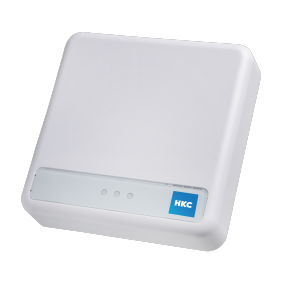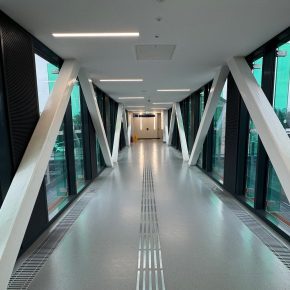
Why door components should be part of lifecycle planning
Doors and door hardware are one of the most heavily used elements of a building and if not specified correctly they may then account for up to 80% of the building’s maintenance costs.
Here, Graham Hulland from dorma+kaba looks at the issues to consider to ensure life-cycle costs are kept to a minimum and that legislative and site requirements are both maintained.
BS ISO 15686-5:2008 defines lifecycle costs as: “The cost of an asset throughout its lifecycle while fulfilling the performance requirements.” It is estimated that where doors and their hardware represent less than 1% of a building’s initial cost – they will then account for over 80% of the building’s maintenance costs, which demonstrates the importance of taking a long term view when it comes to product specification.
Selecting the right door components is critical to ensure long-term reliability and safety. Here are some key areas to consider:
Installation and intended use
It may sound simple, but ensuring a door is easy to use can prevent damage and wear over time by reducing misuse from frustrated users.
Choosing a door control product that includes a backcheck feature will protect the door, ironmongery and the surrounding area from aggressive door opening.
The ‘Thinking Backcheck’ feature fitted to the majority of DORMA door closers allows a door to be fully opened during normal operation without incurring any increased resistance, but will cushion and arrest the door at 85º to 90º if opened aggressively.
This is especially important for fire doors where damage can compromise its performance in the event of a fire.
Alternatively, a Delayed Action closer will allow the door to stay open longer allowing more people or slower moving traffic through the door before it begins to close.
This is particularly suited to hospitals, where beds, trolleys and wheelchairs are moved frequently, and ease of movement can prevent accidental damage to the door leaf and reduce the number of open/close cycles it is subjected to. The delay is controlled by a valve and so can be adjusted to suit each application.
How often will the door be used?
In high traffic areas such as corridors, door components will be subjected to thousands of open/close cycles a year and potentially millions throughout its life.
Electro-magnetic hold open or free swing door solutions allow doors to be held open during normal use and close automatically upon activation of the fire alarm, or in the event of a power failure.
As the doors are operated less frequently these systems not only improve the ease of access through the building but also help to reduce wear and damage. This in turn reduces the lifecycle costs while still ensuring compliance with both fire and access regulations.
Prevent vandalism and abuse
The risk of intentional damage in areas such as schools should also be taken into account. Choosing slide arm door closers, or concealed door controls as an alternative to standard ‘scissor’ arm, surface mounted door closers can prove a practical and preventative measure.
Achieve long-term benefits
By specifying and installing the correct high quality components based on full product information, specifiers can help ensure the doors continue to meet regulations even if standards are updated.
For example in 1991, DORMA supplied door closers to the Royal Devon & Exeter Hospital. More than 20 years on, the original products continue to function correctly on the original doors, and comply with all current Building Regulations and Product Standards.
Ensuring door components are not only compliant but also capable of standing the test of time is a complex but important task. Selecting high quality doors and components that are suitable for the application will help to ensure that maintenance, repair and ultimately replacement costs are minimised.
For further information download dorma+kaba’s “Which Door Control?” guide.
Latest news

11th March 2025
ADSA’s 40 Years of Innovation
The Automatic Door Suppliers Association (ADSA) is kicking off its 40th anniversary with the launch of an animated timeline that showcases its incredible journey and industry-defining achievements.
Posted in Access Control & Door Entry Systems, Architectural Ironmongery, Articles, Building Associations & Institutes, Building Industry Events, Building Industry News, Building Products & Structures, Building Services, Doors, Facility Management & Building Services, Health & Safety, Innovations & New Products, Recruitment, Retrofit & Renovation, Security and Fire Protection, Training, Videos
11th March 2025
Senior answers the call at Merseyside’s new state-of-the-art fire station
Safe, secure, and sustainable aluminium fenestration solutions from Senior Architectural Systems have been installed at Merseyside Fire & Rescue Service’s brand-new fire station in Aintree.
Posted in Aluminium Products, Articles, Building Industry News, Building Products & Structures, Building Systems, Case Studies, Curtain Walling, Doors, Facades, Glass, Glazing, Restoration & Refurbishment, Retrofit & Renovation, Sustainability & Energy Efficiency, Walls, Windows
10th March 2025
Abloy UK & HKC to showcase innovative security solutions at The Security Event 2025
Abloy UK and HKC are set to make a significant impact at The Security Event 2025, inviting visitors to their collaborative stand 5/F50 to explore the latest innovations in integrated security solutions.
Posted in Access Control & Door Entry Systems, Architectural Ironmongery, Articles, Building Industry Events, Building Industry News, Building Products & Structures, Building Services, Doors, Exhibitions and Conferences, Facility Management & Building Services, Health & Safety, Information Technology, Innovations & New Products, Posts, Retrofit & Renovation, Security and Fire Protection, Seminars
10th March 2025
Passivent on the right track with Belfast railway footbridge project
Natural and hybrid ventilation solutions manufacturer Passivent has supplied nine bespoke Aircool® ventilators as part of a new fully enclosed, glazed footbridge spanning the railway track at the upgraded York Street Train Station in Belfast.
Posted in Air Conditioning, Articles, Building Industry News, Building Products & Structures, Building Services, Case Studies, Curtain Walling, Facility Management & Building Services, Heating, Ventilation and Air Conditioning - HVAC, Restoration & Refurbishment, Retrofit & Renovation, Walls
 Sign up:
Sign up: 